Most gardeners will be familiar with the exotic Cymbidium and Phalanopsis orchids or maybe the native Dendrobium. However, the orchids which fascinate me are the tiny terrestrial orchids which can be found growing in the wild in the eastern and southern states of Australia. When I look at them closely through the macro lens of my camera, I really start to see the amazing details in their flowers.
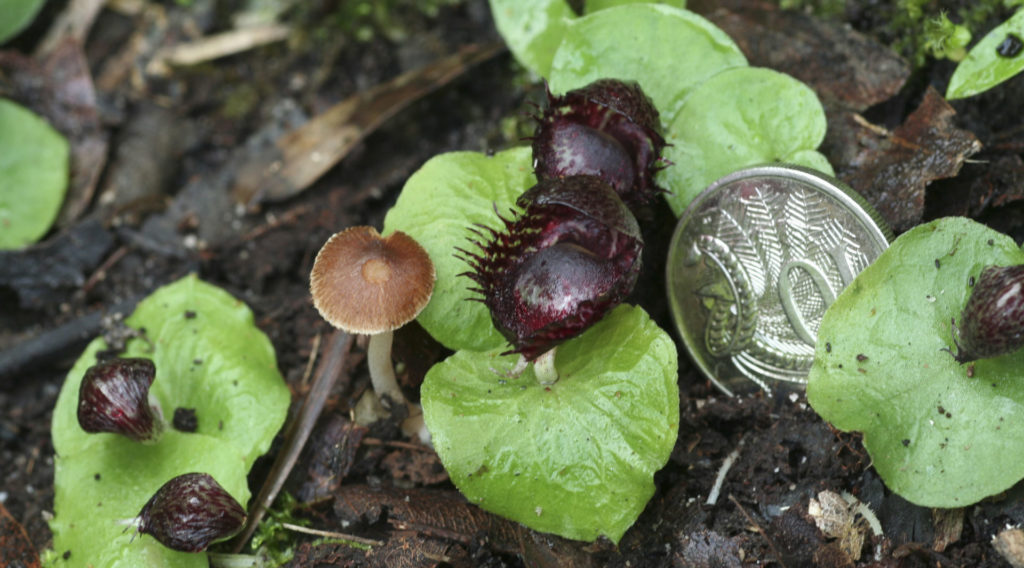
Orchids belong to the largest plant group on earth with over 30,000 identified species. Of these, over 1700 species are found in Australia and the majority of these are found nowhere else in the world.
Approximately 80% of our native orchids are terrestrial (that is they grow in the ground) and they vary in size from the tiny Helmet Orchids (Corybas species) which are only 1-2 cm in height, to the Tall Leek Orchid which can reach to a metre.
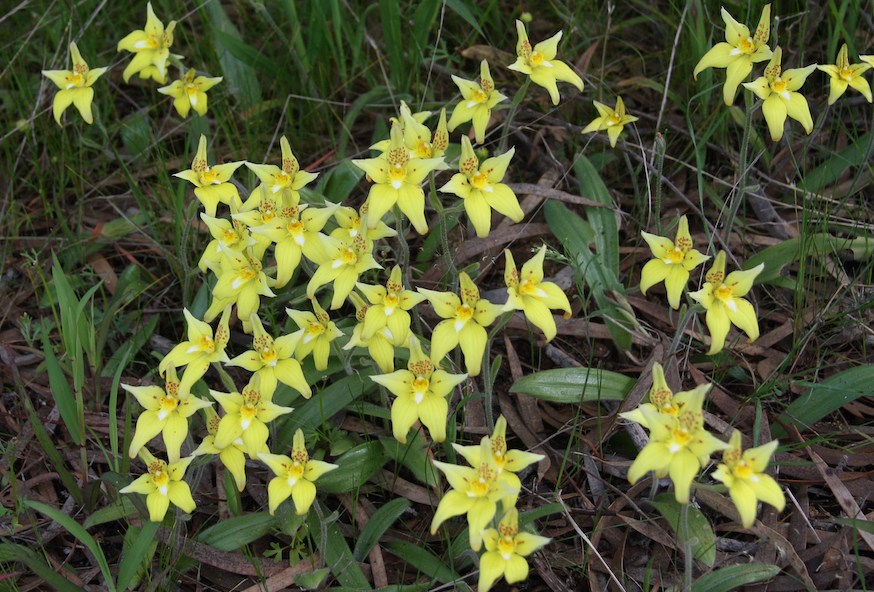
The remaining 20% are either epiphytes (which grow on the trunks and branches of trees and some even tangle themselves in the outer twigs) or lithophytes (which grow on rocks and cliff faces).
TRICKERY, MIMICRY AND DECEIT
I find that the study of orchids and particularly their methods to achieve pollination to be fascinating. It even leads to a world of trickery, mimicry and deceit.
One of the petals of an orchid flower has been modified and is known as the ‘lip’ or ‘labellum’. This serves as the attractor or landing pad for the insects that visit the flower. Some orchid flowers can be quite bizarre in shape and they are often adorned with colourful hairs, bands or teeth to attract their insect pollinator.
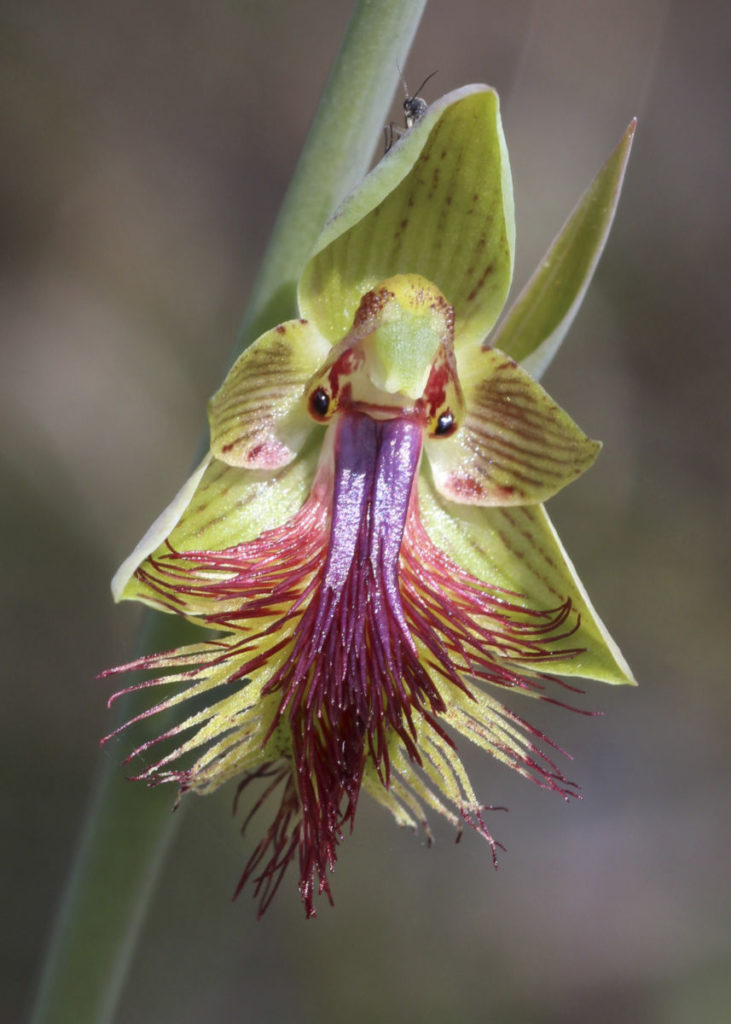
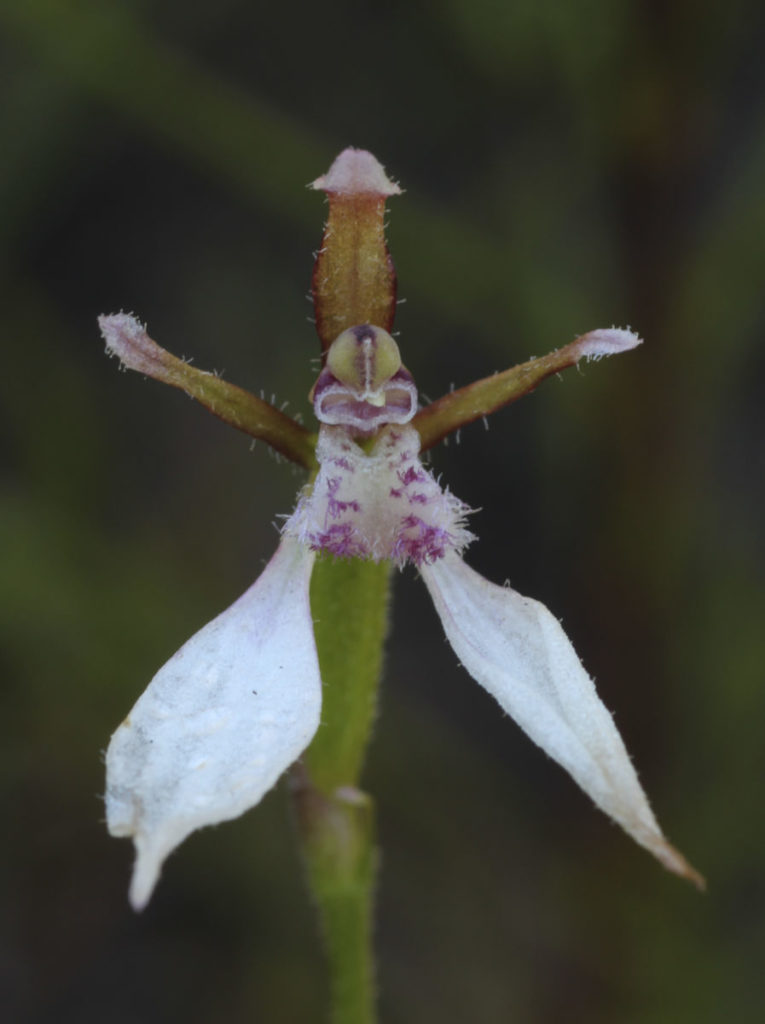
Orchids achieve pollination in a variety of ways including mimicking the appearance and scent of the female insect by enticing the male pollinators with a promise of sweet nectar, but then failing to provide it.
One orchid, which emits a sweet smelling scent, is Lyperanthus suaveolens. Its pollinator is deceived into seeking nectar from the base of the labellum, but goes away unrewarded. However, he does collect pollen in the process which he later deposits on the next flower, so achieving pollination for the orchid.
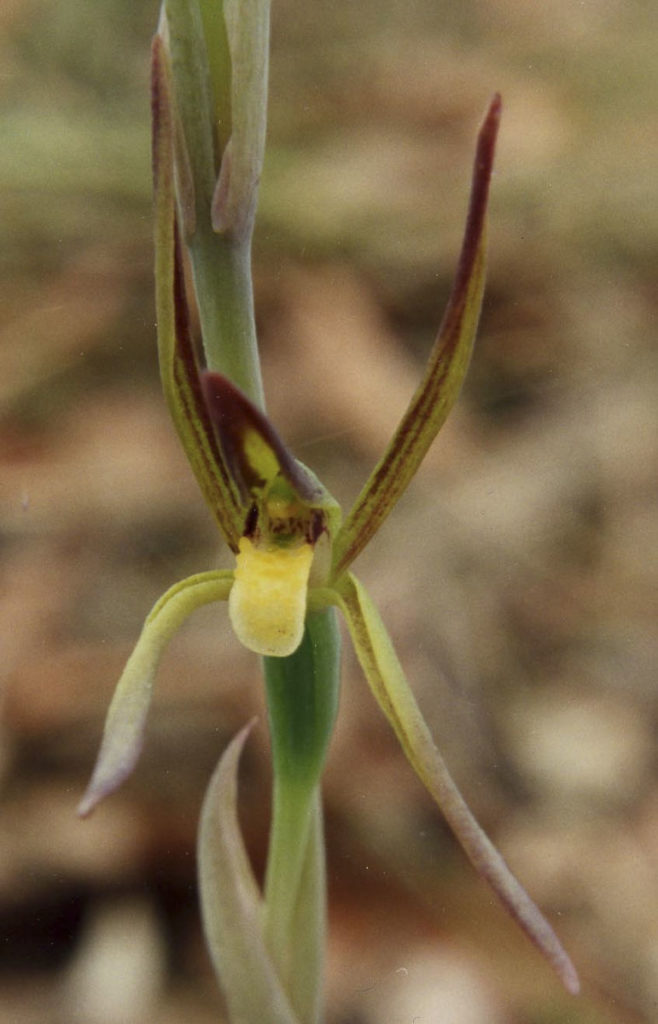
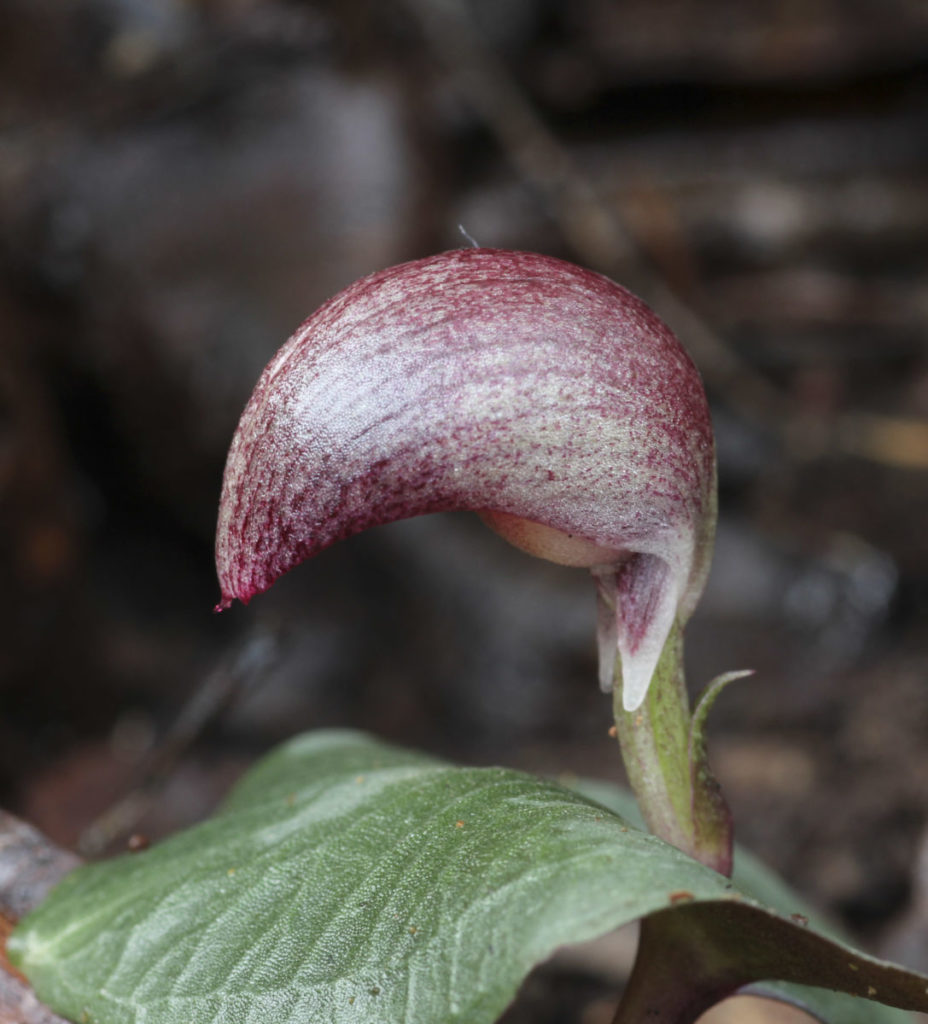
In the same way, Corybas orchids which have the appearance of small fungi, have a foul smell which attracts fungus gnats and small flies which are their pollinators.
Chiloglottis orchids use trickery to achieve pollination. Each species of Chiloglottis orchid has its own specific wasp pollinator. The orchid produces a special floral scent known as a pheromone which mimics that of the female wasp. As well, an arrangement of glands and calli on the labellum (lip) of the flower bears a remarkable resemblance to the female wasp. As a consequence, the male sees and smells what he thinks is a female and flies down to mate with her. In the confusion, he picks up pollen which he then deposits on the next flower and so pollination occurs.
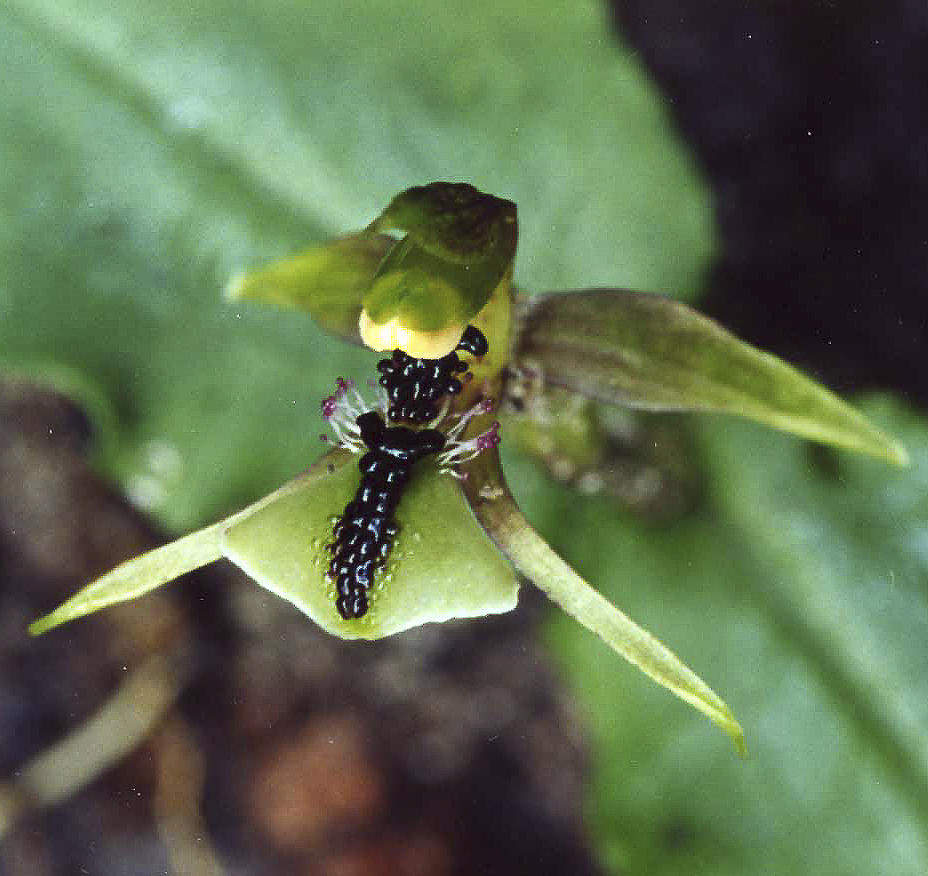
The Large Tongue Orchid (Cryptostylis subulata) also uses trickery to achieve pollination. This orchid has a very prominent labellum that is designed to fool a visiting wasp into thinking he is mating with the female of his species. Known as pseudo-copulation, this results in pollen being transferred between pollinator and flower.
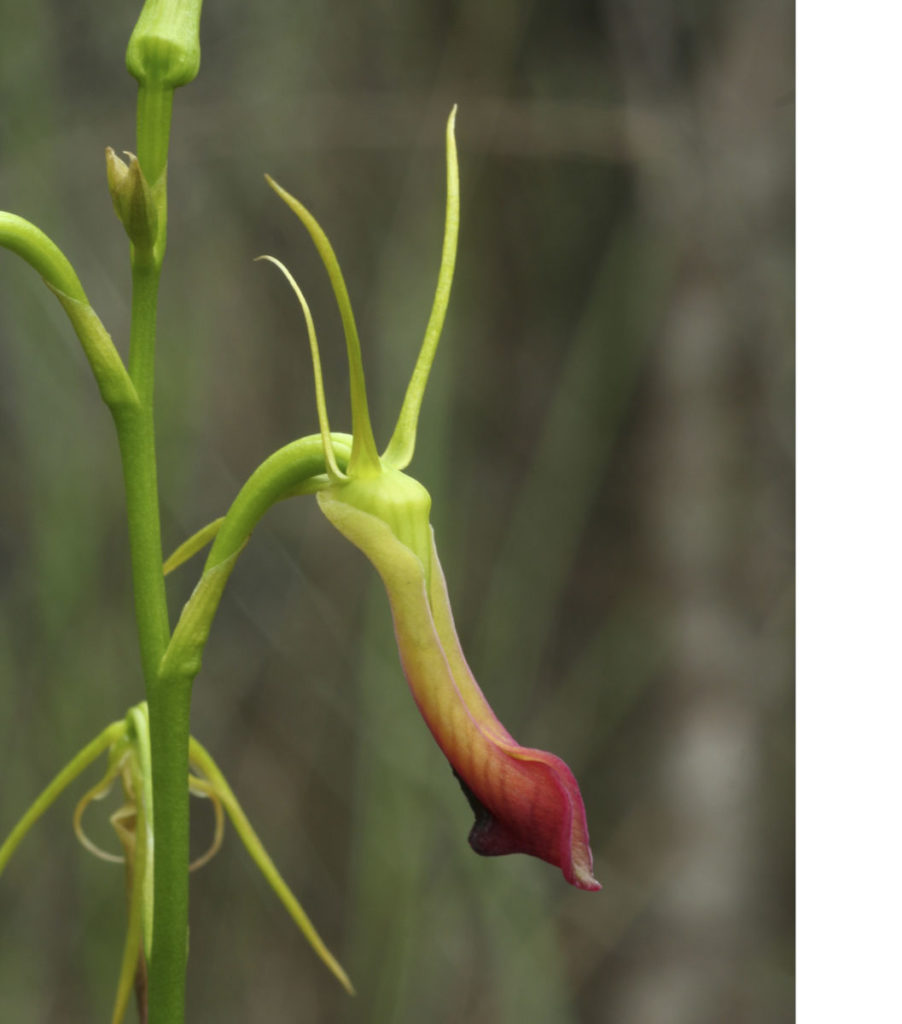
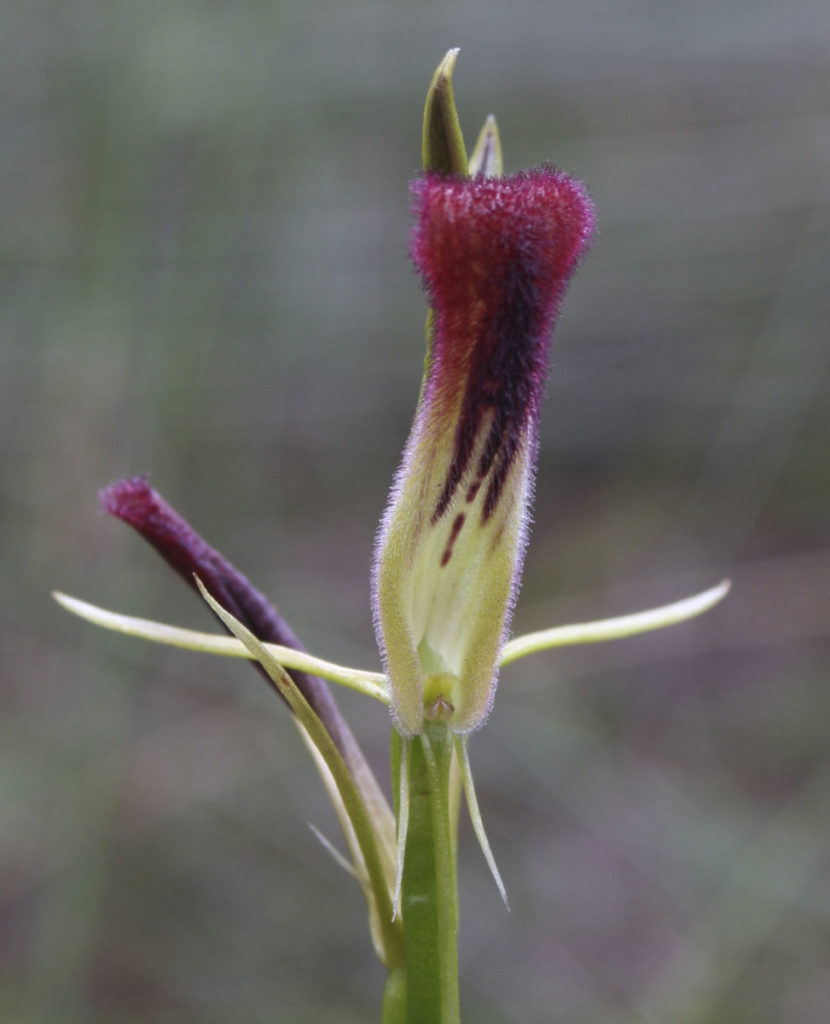
The Flying Duck Orchid (Calena major) is one of the orchids which traps its insect pollinator to achieve pollination. In this case, the head of the duck is the labellum. When an insect lands on the ‘head’, a trigger is released resulting in the insect being trapped in the ‘wings’ of the flower. To escape, the insect must brush past the pollen presenter. In so doing he picks up pollen as he escapes from the flower.
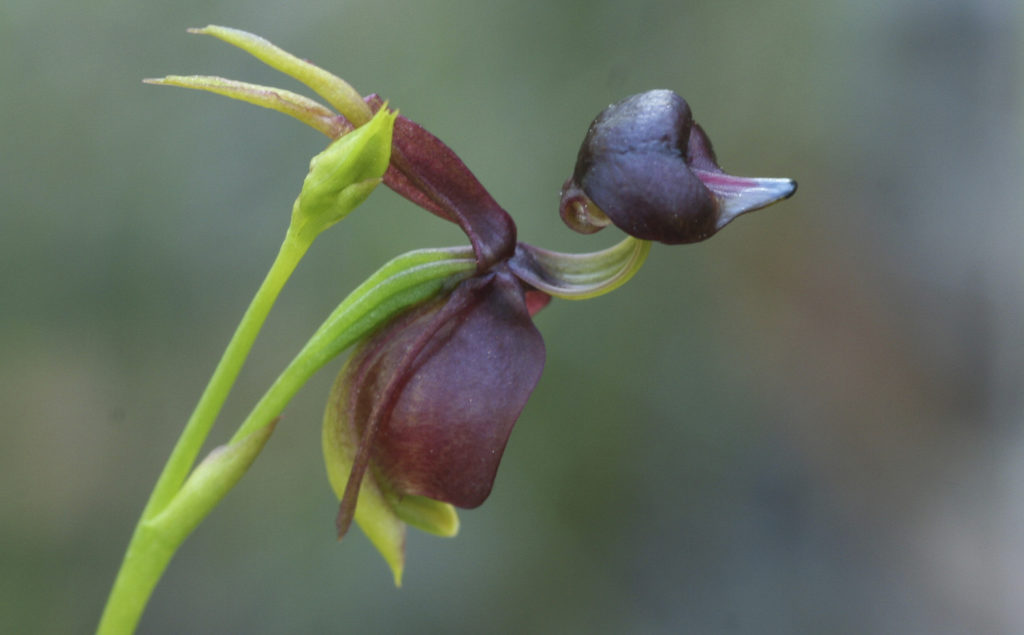
Greenhood orchids also trap their pollinators. The labellum is on a touch sensitive trigger and as an insect descends into the flower, the trigger is released and it suddenly finds itself flung into the body of the flower. As it tries to escape, it picks up a dab of pollen which is later transferred to another greenhood flower.
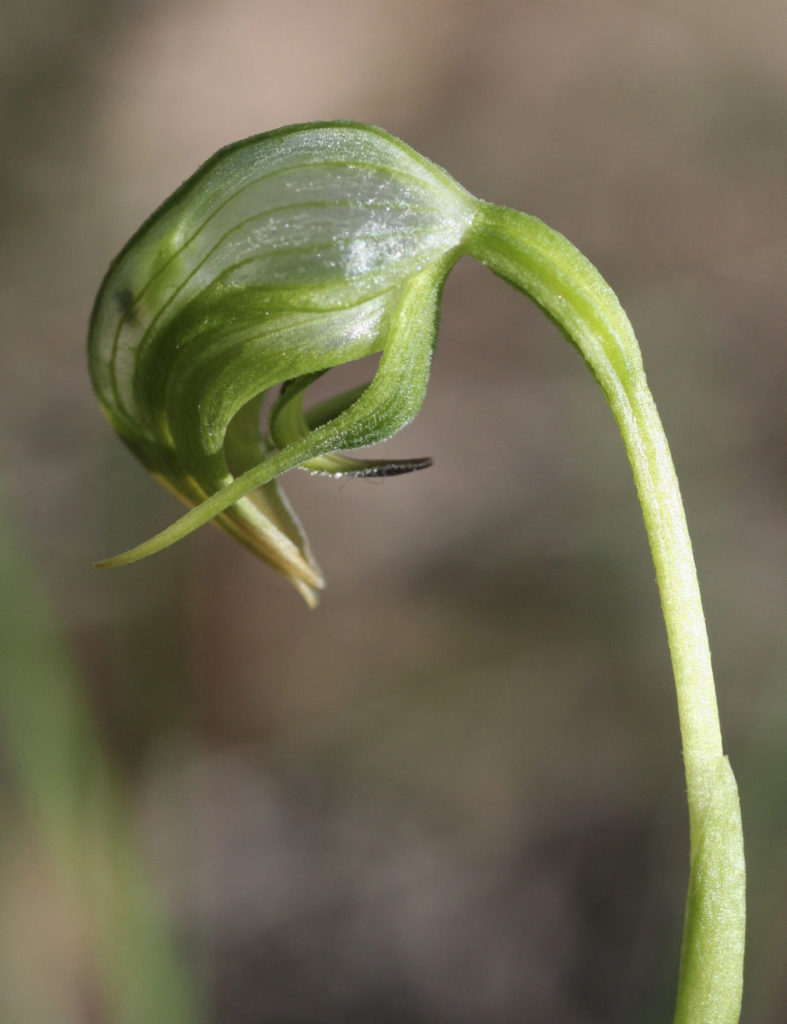
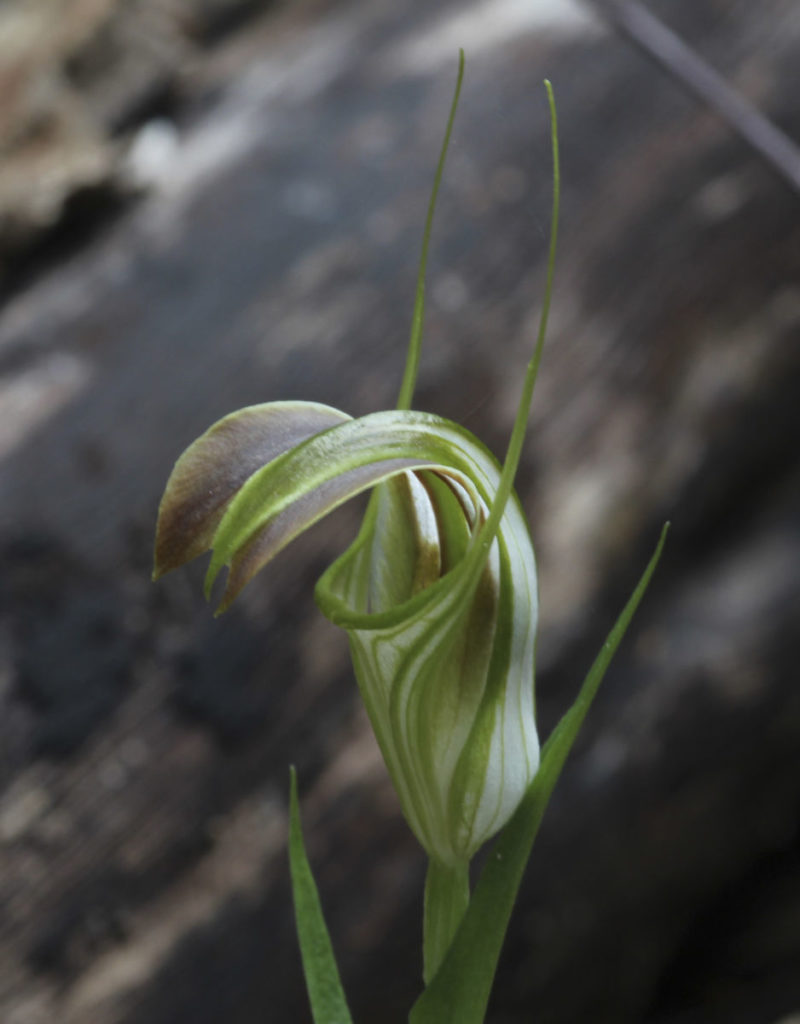
Some orchids such as The Horned Orchid (Orthoceras strictum) and Austral Ladies Tresses (Spiranthes australis) are self-pollinating. Their pollen is crumbly and falls readily within the column.
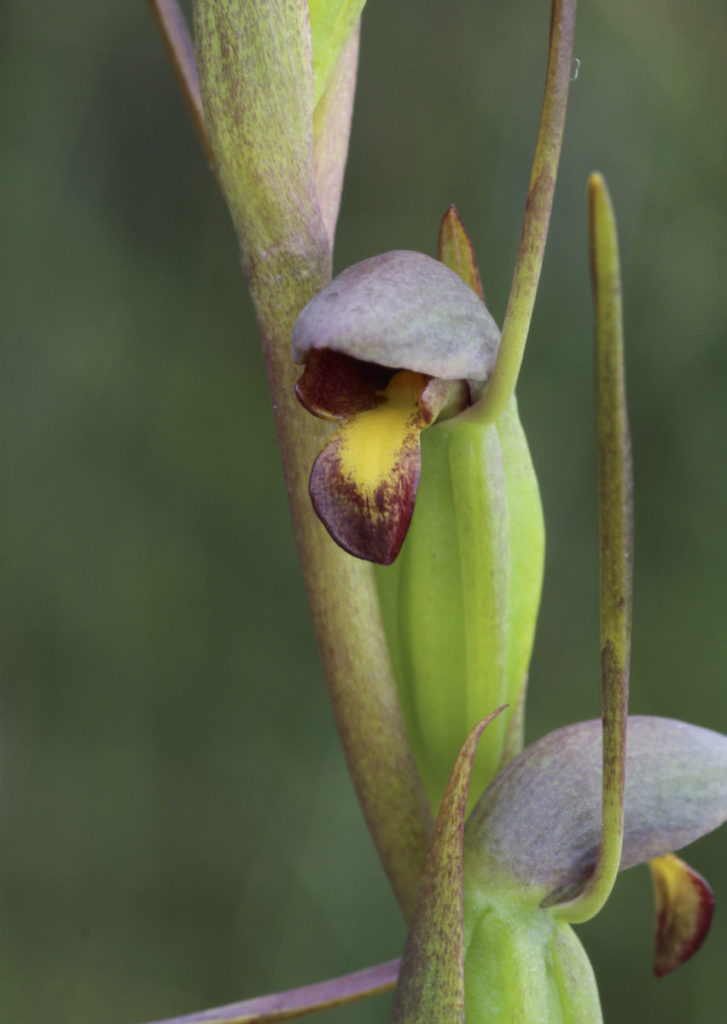
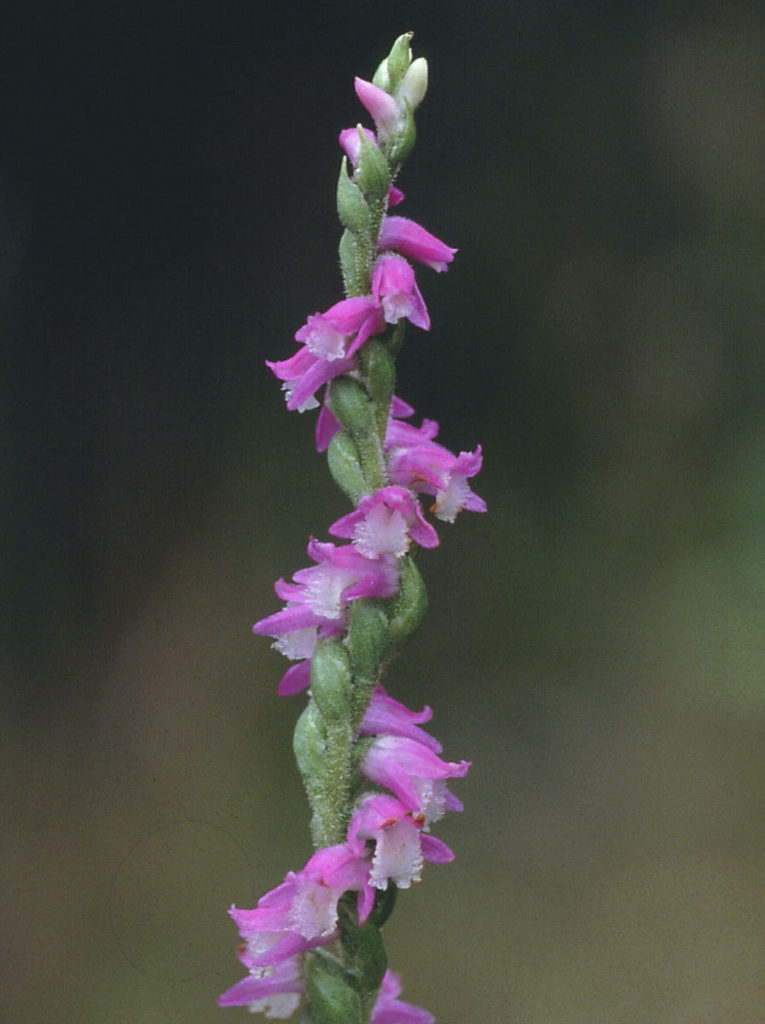
Other orchids mimic native flowers to attract their pollinator. Examples of these are the blue Sun Orchids (Thelymitra species) that are pollinated by the same insects that pollinate the blue native irises (Patersonia) and lilies (Dianella). The yellow Donkey Orchids (Diuris) and yellow peaflowers are pollinated by the same insects (native bees).
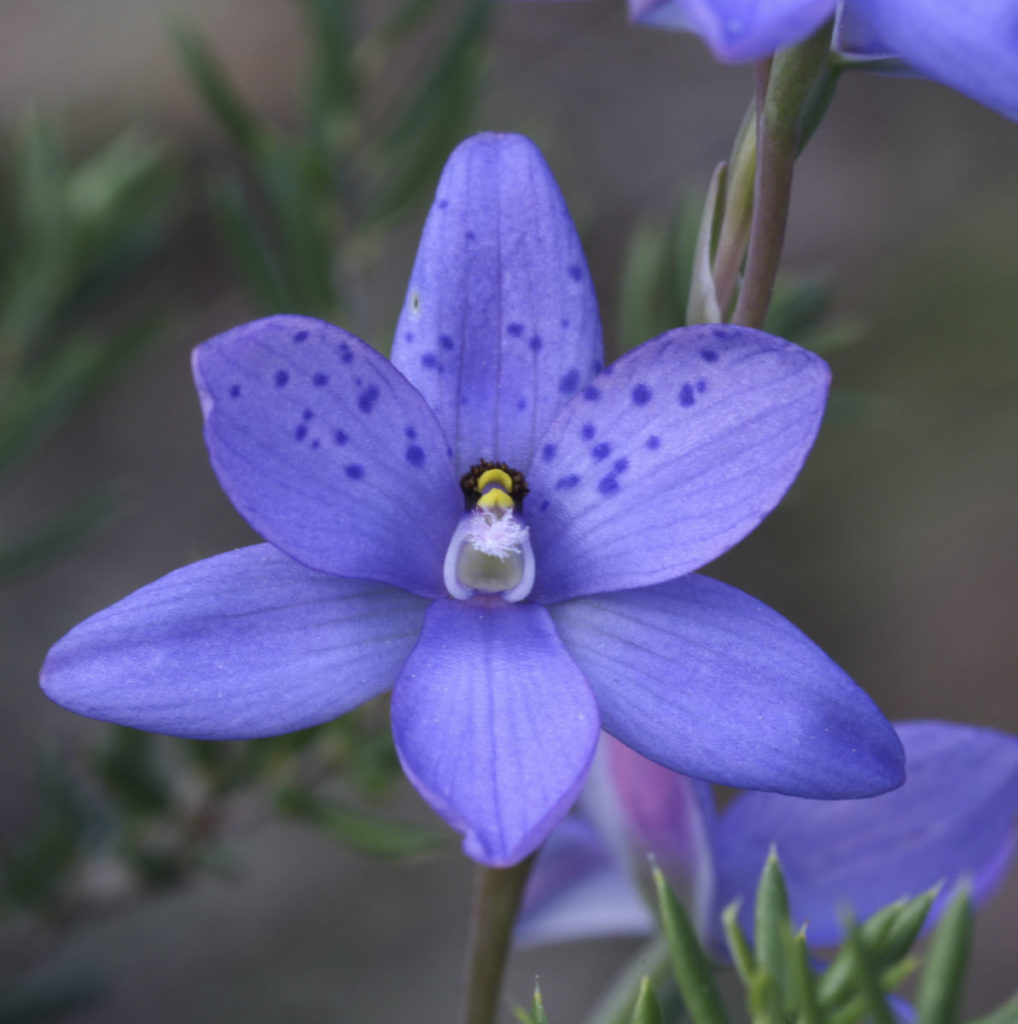
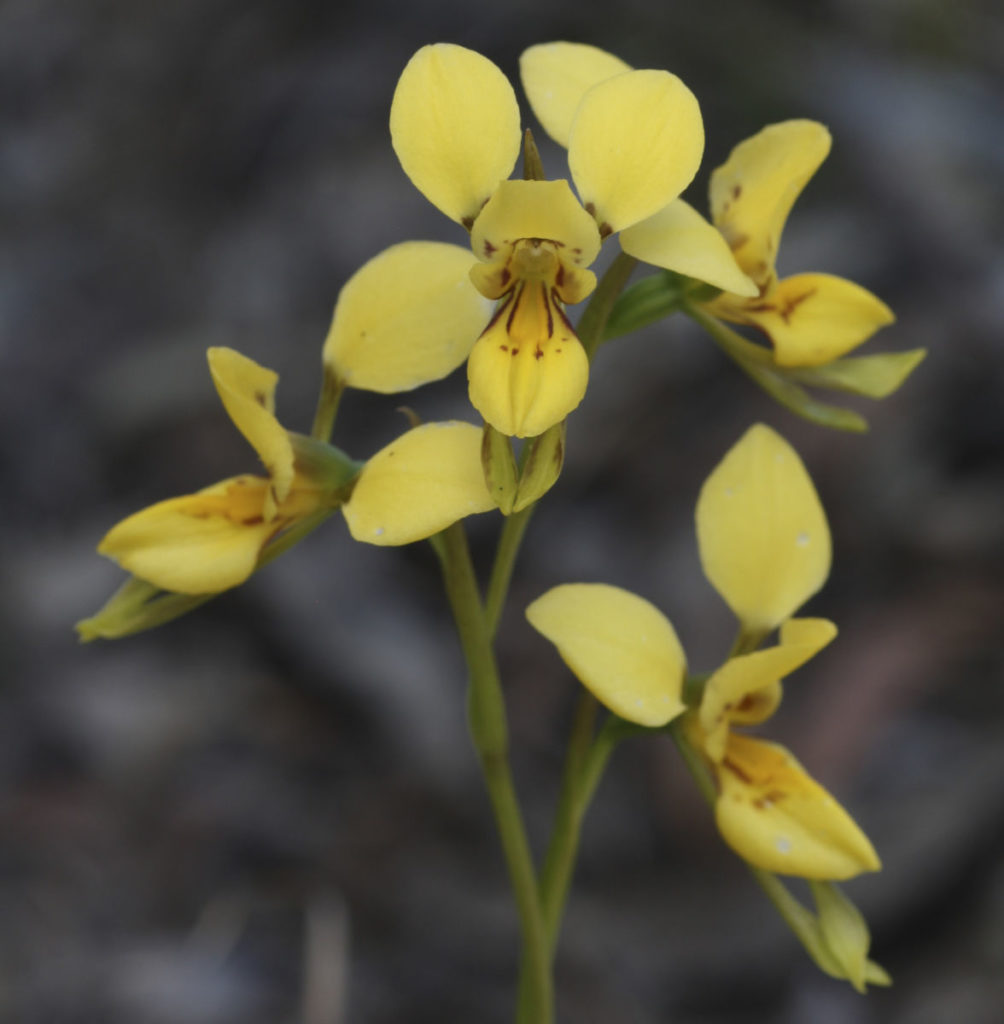
Another orchid which mimics another plant is The Tall Leek Orchid (Prasophyllum elatum). It copies the Xanthorrhoea (Grass Tree) in several ways. They are both pollinated by the same insects, they both flower well the season following a bushfire and from a distance the flowers of the orchid could be mistaken for the flowers of the Grass Trees.
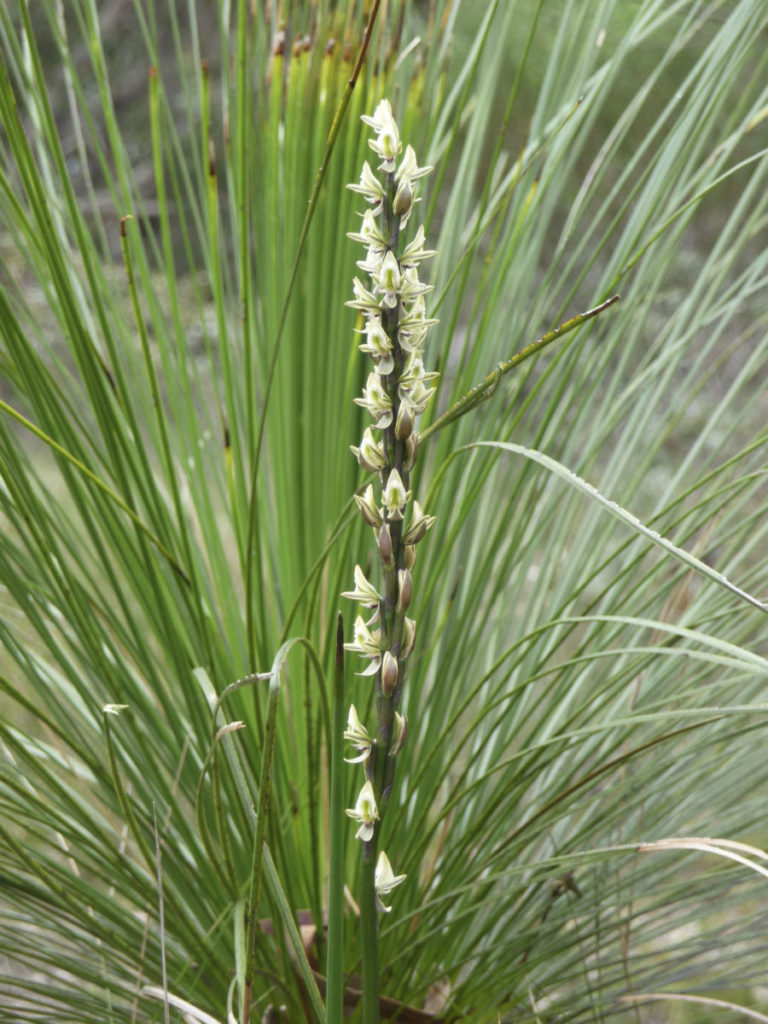
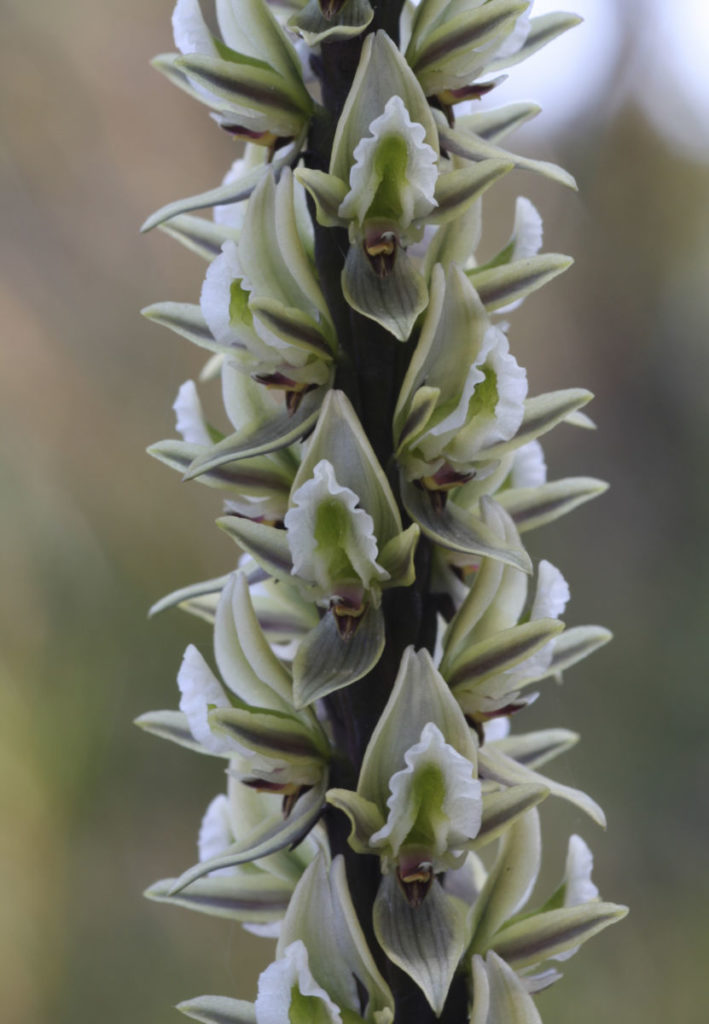
ENJOYING THESE EXQUISITE GEMS
As much as it would be a delight to have these fascinating plants growing in the garden, I leave that to the experts! Many native orchid growers do have success growing some of the terrestrial species in pots. However, while a few may be easy to grow, others are very difficult or impossible in cultivation.
Normally native orchids in the wild need a relationship with a specific underground fungus to survive and that cannot be readily provided in a garden environment.
We also need to remember that all Australian native orchids are protected plants and cannot be picked or collected in the wild. So instead, we enjoy them through the lens of the camera!
ABOUT THE AUTHOR
Margaret Bradhurst has had a life-long interest in native orchids. Growing up in Hobart she brought that love of orchids to southern Sydney where for the last 25 years, she has been recording and photographing native orchids. She has been a member of the Sutherland Group of the Australian Plant Society NSW for many years.
This article first appeared in GardenDrum in August 2016.
